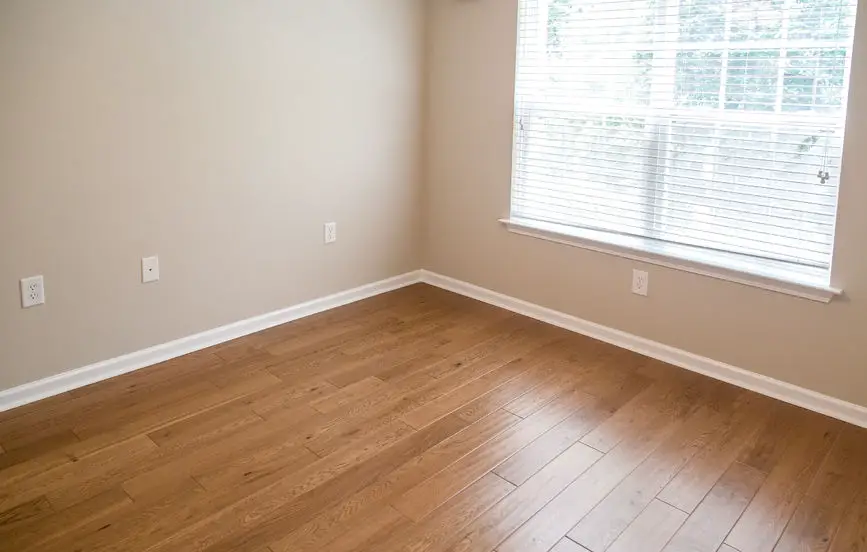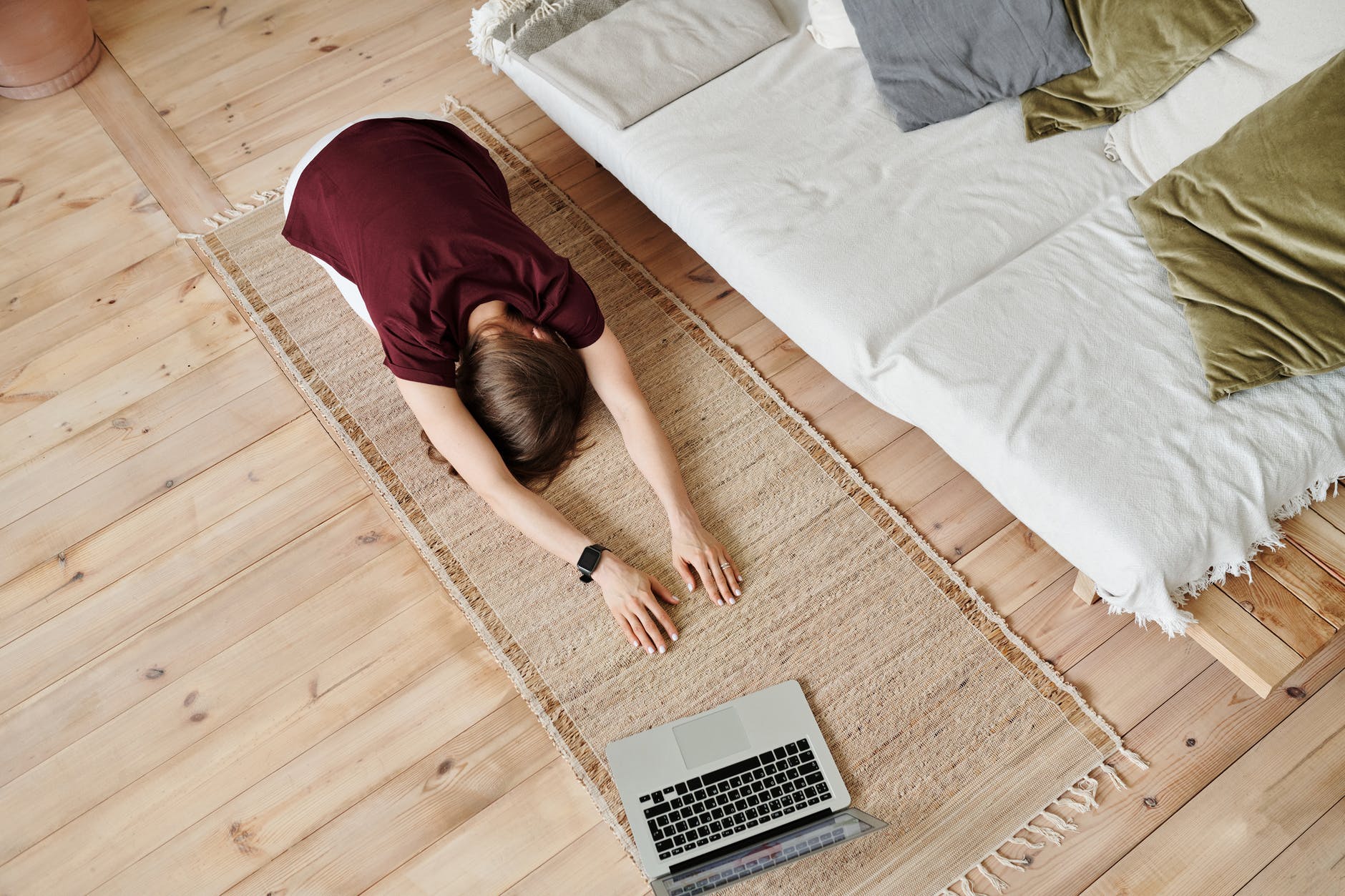Imagine yourself walking through your beautiful home, the sunlight streaming through the windows, highlighting the rich grain of your wooden floors. But as you take a step, your feet slide out from under you, leaving you with a jolt of fear and a bruised ego. A slippery wood floor can be a real hazard, especially for children and the elderly. Thankfully, there are ways to make those wood floors less slippery while retaining their beauty and charm.

Image: johnnycounterfit.com
Whether you have a newly polished floor that’s become a skating rink or an aging floor with a worn-out finish, this guide will equip you with the knowledge and solutions to tackle this common problem. We’ll dive into the reasons behind slippery floors, explore effective prevention measures, and provide practical tips for making your wood floors safer for everyone.
Understanding the Slippery Situation
The slickness of your wood floors can be attributed to several factors:
1. Type of Finish:
Polys, varnishes, and sealants are common finishes for wood floors, but their properties can vary considerably. Some finishes create a smooth, hard surface that’s prone to slipperiness, especially when wet.
2. Cleaning Products:
While cleaning products aim to keep your floors sparkling, some can leave behind a residue that makes the surface slippery. Waxes and polishes, while adding shine, can also contribute to slipperiness if not applied correctly.
3. High Traffic Areas:
Areas of your home that receive heavy traffic, like entryways and kitchens, tend to gather more dust and grime, increasing the chances of slippery surfaces.
4. Age of the Finish:
As your wood floor finish ages, it can become worn down, dull, and more prone to slipperiness. This is especially true for floors that have been exposed to high traffic and moisture.
5. Moisture:
When water or other liquids spill on your floor, they can create a hazardous slippery surface.
6. Dust and Debris:
Even a thin layer of dust or small particles can reduce friction on your wood floors, making them slippery.
Prevention is Key: Taking Action Before Slipping Happens
Before you find yourself in a situation where you’re sliding across your floors, it’s important to take preventative measures:
1. Choose the Right Floor Finish: When choosing a wood floor finish, consider the level of slipperiness you want. Matte finishes tend to be less slippery than high-gloss finishes. There are also a variety of anti-slip floor finishes available, which have been designed to improve the friction coefficient of the floor surface.
2. Keep Your Floors Clean: Regular cleaning with a specialized wood floor cleaner can help remove dust, dirt, and debris that contribute to slipperiness. It’s best to avoid using harsh chemicals or abrasive cleaners that can damage the finish.
3. Stay Away from Waxes and Polishes: While waxes and polishes can enhance the appearance of your wood floor, they can also make the surface slippery, especially when they build up over time.
4. Use a Floor Mat at Entryways: Placing mats or rugs at entryways can help prevent dirt, moisture, and debris from spreading throughout your home. This will not only improve the aesthetic appeal of your floors but also reduce the chances of them becoming slippery.
5. Avoid Over-Polishing: Polishing your floors too often can make them more slippery. If you do need to polish them, use a product that’s designed for wood floors and apply it sparingly.
Tackling Existing Slick Surfaces: Simple Solutions for a Safer Home
If you’ve encountered slippery floors despite taking preventative measures, don’t worry! Here are some effective solutions to restore grip to your beautiful wood floors:
1. Restore the Finish: If your floor’s finish is old and worn, it could be making it more slippery. Sanding and refinishing the floor can help even out the surface and restore its grip. However, this is a more labor-intensive solution that requires caution and expertise.
2. Apply a Non-Slip Finish: Specialized non-slip floor finishes are available for wood floors, offering a durable and effective way to increase traction. These finishes are typically applied as a top coat over the existing finish, creating a textured surface that reduces slipperiness.
3. Consider a Rug Solution: Rugs can be both aesthetically pleasing and practical in high-traffic areas. They add color and texture while providing a non-slip surface for your feet. Choose rugs with a non-slip backing to ensure they stay securely in place.
4. Opt for Natural Solutions: You can try applying a natural oil like linseed oil or tung oil to your wood floors. These oils can help create a more natural grip on the surface, reducing slipperiness.
5. Embrace Floor Mats: Utilizing floor mats in areas prone to spills, like kitchens and bathrooms, is a simple and effective way to increase traction. Choose mats with a textured surface for added grip and choose mats made from absorbent materials to prevent moisture from spreading.
6. Introduce Microfiber Rugs: Microfiber rugs are known for their exceptional water absorption and durability. Place these rugs in high-traffic areas to catch spilled liquids and dust particles, mitigating the slippery potential of your wood floors.
7. Embrace Anti-Slip Strips: Consider using anti-slip strips or tapes in areas where slips are most common, such as bathtub bottoms or stair steps. These strips are designed to provide increased friction, preventing accidental slips and falls.
8. Regular Cleaning with Vinegar: A mixture of white vinegar and water can be used to clean floors, removing residues and debris that contribute to slipperiness.
9. Use a Non-Slip Spray: Several non-slip sprays are specifically formulated for wood floors. These sprays offer a temporary solution but can be a quick fix to make your floors less slippery.

Image: sportybird.io
Expert Insights for Making Informed Decisions
When tackling slippery floors, it’s always helpful to consult with a professional. A flooring expert can provide guidance on the most appropriate solutions for your specific situation, taking into consideration the type of wood, the existing finish, and the level of slipperiness you’re experiencing.
For those considering applying a non-slip finish, a flooring expert can advise on the best type of product for your specific needs. They can help you choose a finish that’s both effective and compatible with your existing floor finish.
How To Make Wood Floor Less Slippery
Conclusion
The allure of gleaming wood floors is undeniable, but the safety hazards of slippery surfaces can overshadow their beauty. By understanding the causes of slipperiness and implementing the solutions discussed in this guide, you can transform your wood floors from potential hazards to safe and stylish spaces that you can enjoy for years to come.
Don’t hesitate to seek professional advice when necessary, and remember, your safety should always be at the forefront of your decisions. Now, go forth and enjoy those beautiful wood floors, knowing that they are safe for you and your loved ones.






